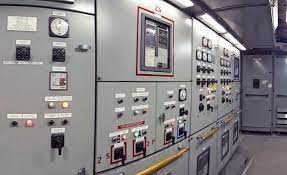Cleaning electrical equipment should be a part of any electrical preventative maintenance programme, but using the wrong cleaning methods could be costly.
First Things to Consider
To choose the cleaning method, consider the contamination that needs to be removed and the amount of time left before the equipment needs to be placed back into use.
A sufficient amount of dry time must pass before cleaning electrical equipment with liquid solvents or water. Check to see if insulation has been sufficiently recovered before re-engaging machinery. To learn more about Electrical Panel Cleaning touch with us.
1.Brooms and rags
Wiping off dirt with a clean, dry, lint-free cloth or soft brush is often sufficient if the device is small, the surfaces to be cleaned are approachable, and only dry dirt needs to be removed.
Avoid using used towels to clean electrical equipment because the lint can adhere to the insulation and act as an extra dirt-collecting agent that might cause tracking. On clean fabric rags, there shouldn’t be any stains like oil, grease, or metal.
2. Water-based Fluids and Solvents
It could be required to use a solvent to get rid of accumulated grease, oil, or grime. Use a rag that has been lightly (but not thoroughly) soaked in a nonflammable solvent for wiping. To ensure compatibility with the components being cleaned, cleaning solutions for electrical equipment should be carefully selected.
Never use any liquid cleaners, including spray cleaners, unless specifically directed to do so by the equipment maker due to the risk of residues harming, interfering with electrical or mechanical operations, or endangering the integrity of insulation surfaces.
3.Use of a vacuum
To get rid of loose dust, filth, and particles, use a vacuum-type cleaner with non-metallic attachments and hoses. Insulation could be harmed and contaminants could be distributed by compressed air blowing out machines.
Filters in equipment enclosures and substation rooms must be cleaned periodically, and they must be replaced if they are damaged or clogged. Garbage and stray equipment should be removed from the cages. Following cleaning, subsequent maintenance may reveal new or unexpected wear or part loss.
4. Sweeping and mopping
Use a sweeping compound while cleaning a substation room to lessen the amount of dust and filth that enters the air. When mopping, keep the mop bucket as far away from the switchgear as you can to prevent spill damage.
Cleaning Electrical Equipment with Compressed Air
Compressed air blowing may be necessary to remove dirt when vacuuming or wiping are inadequate.
OSHA regulations in 29 CFR 1910.242(b), “Hand and Portable Powered Tools and Other Hand Held Equipment,” should be followed when using compressed air. These regulations state that air pressure used for cleaning must not exceed 208.85 kPa (30 psi), that chip guarding must be effective, and that workers must wear the appropriate personal protective equipment.
To avoid damaging insulating surfaces, hurting personnel, or interfering with the mechanical operation of equipment nearby, use caution when working with compressed air. It is important to direct dry compressed air in a way that avoids further clogging of insulating recesses and ventilation ducts.
Additional protection might be needed if the insulation is cleaned with compressed air while it is still in place to avoid contaminating nearby machinery. Remove the item to a suitable location before you start cleaning, and cover any exposed electronics to keep debris out. . For more details about Electronics companies in Dubai contact us.



